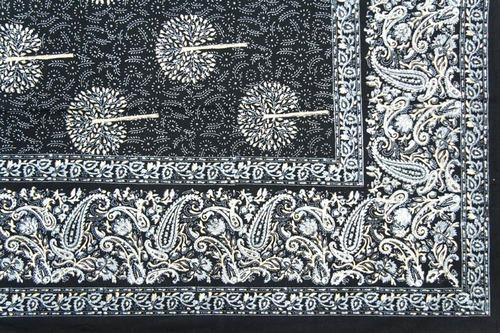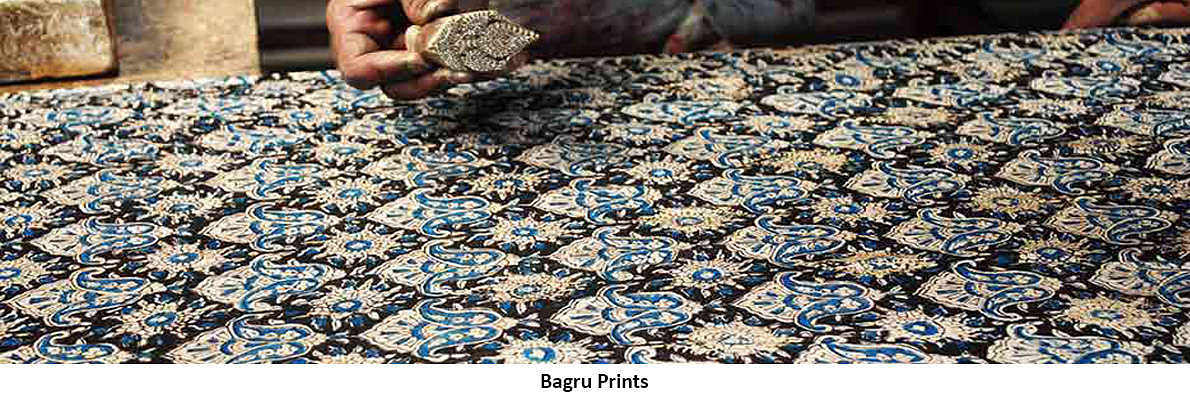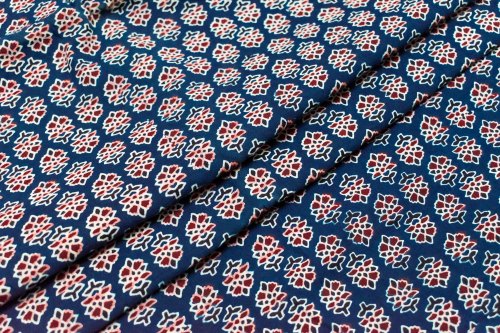
Sanganeri Print
Sanganeri is a hand-block printing technique originating from a small village called Sanganer situated in the southern part of Jaipur Rajasthan. The Sanganeri printing technique developed between the 16th and 17th century. It became one of the major export items for the East India Company, and its trademark was the original dye used for printing designs.
Sanganeri print is mainly done by the The ’Chippa’ community where the entire family gets involved. Today, nearly 3000 people are employed in practicing this craft on a professional level.
The artisans mainly use a wooden or metal block with designs engraved on them printing on the fabric . The wooden blocks are made out of Teak or Sheesham wood. The blocks, which are used to print outlines, are called Rekha, and the filler blocks are called Datta. To get more intricate patterns and more delicate details with sharp lines, metal blocks are used.
There is a great variety in the types of designs and patterns used in Sanganeri print, which includes all kinds of flower motifs, the main ones being of sunflower, roses and narcissus’. Apart from flowers, designs depicting various gods, fruits and folk scenes are also popular. The curves and patterns majorly depict the cultural flora and fauna of Sanganer.
The Sanganeri printing process is divided into five distinct parts:
Hari Sarana:
Before the printing process, the dirt and dust from the cloth is washed off so that the prints are vibrant. The fabric is submerged in a bleach and water solution for a few days and then washed with boiling water.
Marking:
Once the Hari Sarana process is completed, the cloth is marked with chalk and scale. This helps with the printing process as the artisan can easily see where the blocks are to be placed.
Printing:
The process of printing is called Chapaai and is done with the help of the wooden or metal blocks. The cloth is printed from left to right, and the number of blocks to be used depends on the number of colors to be used. One block is used for one color, and specific points on the block indicate that the artisan should print the design on the cloth again.
Drying:
Also known as Sukhaai, this process is done to ensure that the color gets secured on the cloth. This process is especially crucial for pigmented dyes. During this process, the color may transfer onto other surfaces, and hence, the fabric is covered in plastic or newspaper. This process also helps in ensuring that the color remains vibrant.
Washing:
The final step in the printing is process is Dhulaai, wherein the cloth goes through exclusive boilers and steaming process, which helps fix the color further into the cloth.
Interesting Facts
- Before the dyers start the process, sand and water is sprinkled on the printing table which is then covered with a wet cloth.
- The history of sanganeri print is almost 500 years old.
- The craft was on the verge of vanishing post independence but was revived again in the early 70’s.
- Under Geographical Indication of Goods Registration and Protection Act.1999, Sanganeri Hand Block Textiles and Furnishings have been recognized to have a unique identity in manufacturing and in belonging to the area of Sanganer. Consequently sale of hand block or screen printed product from any other area as Sanganeri will be punishable under the law.
- The water from the river in Sanganer village added radiance to the dyed fabric owing to its softness. Even the clay present in the sand was suitable for bleaching the fabrics under the sun.
- Two types of printing used in Sanganeri printing are: Calico Printing and Do-Rookhi
You can now shop for beautiful block printed Sanganeri dresses, night wear, casual and formal wear at UNBLOCK By Jenny- Your ONE STOP SHOP for unique designs with a touch of tradition.


